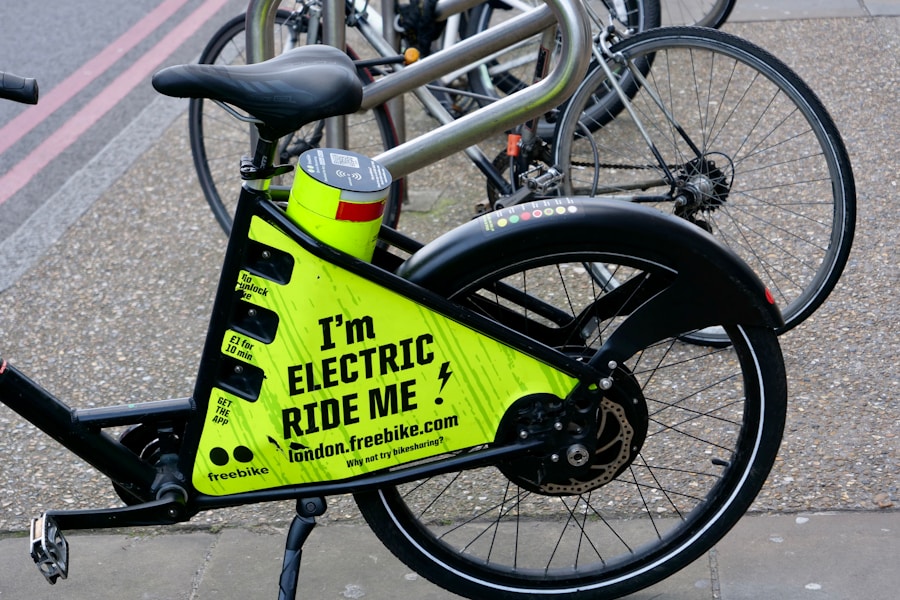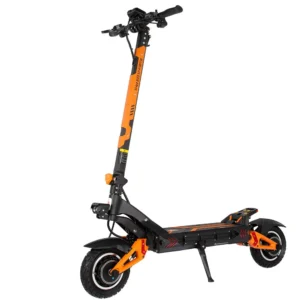Subtotal: 1 506,70 €
Revolutionizing Transportation: The Latest in Electric Bike Technology
The electric bike, or e-bike, has surged in popularity over the past decade, transforming the landscape of urban transportation and recreational cycling. This rise can be attributed to a confluence of factors, including environmental concerns, urban congestion, and the desire for healthier lifestyles. As cities grapple with pollution and traffic jams, e-bikes offer a practical solution that combines the benefits of cycling with the convenience of electric assistance.
The global e-bike market has witnessed exponential growth, with sales figures skyrocketing as more individuals recognize the advantages of this mode of transport. In 2020 alone, the global e-bike market was valued at approximately $23 billion, and projections suggest it could reach upwards of $48 billion by 2026. The appeal of electric bikes extends beyond mere convenience; they also cater to a diverse demographic.
Commuters seeking an efficient way to navigate busy streets, recreational riders looking for an enhanced cycling experience, and even older adults who may find traditional biking challenging are all drawn to e-bikes. The versatility of these machines allows them to serve various purposes, from daily commuting to leisurely weekend rides. Furthermore, as manufacturers innovate and improve designs, e-bikes are becoming more accessible and affordable, further driving their adoption.
The integration of e-bikes into public transportation systems in cities like Amsterdam and Copenhagen exemplifies their growing acceptance as a legitimate and sustainable mode of transport.
Key Takeaways
- Electric bikes are becoming increasingly popular due to their convenience and eco-friendly nature.
- Cutting-edge battery technology has significantly improved the range and performance of electric bikes.
- Advanced motor systems have made electric bikes more efficient and powerful, providing a smoother riding experience.
- Smart features and connectivity, such as GPS tracking and smartphone integration, are enhancing the functionality of electric bikes.
- Sustainable design and materials are being used to make electric bikes more environmentally friendly and durable.
Cutting-Edge Battery Technology
At the heart of every electric bike lies its battery technology, which has seen remarkable advancements in recent years. Lithium-ion batteries have become the standard due to their high energy density, lightweight nature, and long cycle life. These batteries allow e-bikes to achieve impressive ranges on a single charge, often exceeding 50 miles depending on the model and riding conditions.
Innovations in battery management systems have also enhanced performance by optimizing energy use and prolonging battery life. For instance, regenerative braking systems can capture energy during braking and feed it back into the battery, extending the range even further. Moreover, manufacturers are exploring new chemistries and designs to improve battery efficiency and sustainability.
Solid-state batteries, for example, promise to deliver higher energy densities while reducing the risk of fire associated with traditional lithium-ion batteries. Companies like QuantumScape are at the forefront of this technology, aiming to revolutionize not just e-bikes but the entire electric vehicle market. Additionally, advancements in fast-charging technology are making it possible for riders to recharge their batteries in a fraction of the time it used to take, making e-bikes even more convenient for daily use.
As battery technology continues to evolve, we can expect even greater ranges and shorter charging times, further solidifying the role of e-bikes in modern transportation.
Advanced Motor Systems

The motor system is another critical component that defines the performance and user experience of electric bikes. Modern e-bikes typically feature one of three types of motors: hub motors, mid-drive motors, or crank motors. Hub motors are located in the wheel hub and provide direct power to the wheel, making them simple and cost-effective.
However, mid-drive motors, which are positioned at the bike’s crankset, offer superior weight distribution and efficiency by utilizing the bike’s gears. This design allows for better handling on varied terrain and improved performance on inclines. Recent innovations in motor technology have led to more powerful and efficient systems that enhance the riding experience.
For instance, torque sensors can detect how much effort a rider is exerting and adjust the motor’s assistance accordingly. This feature creates a more natural riding feel, allowing cyclists to engage with their environment rather than simply relying on the motor for propulsion. Additionally, advancements in motor control algorithms have improved responsiveness and efficiency, enabling smoother acceleration and deceleration.
Brands like Bosch and Shimano have developed sophisticated motor systems that not only provide robust power but also integrate seamlessly with other bike components for an optimized ride.
Smart Features and Connectivity
| Smart Features and Connectivity | Metrics |
|---|---|
| Number of connected devices | 25 billion by 2025 (Statista) |
| Smart home penetration rate | 33% of households in the US (Statista) |
| Internet of Things (IoT) market size | 212 billion in 2019 (Statista) |
| 5G network coverage | Expected to reach 45% of the world’s population by 2024 (Ericsson) |
As technology continues to permeate every aspect of our lives, electric bikes are no exception. Many modern e-bikes come equipped with smart features that enhance usability and connectivity. Integrated displays provide real-time data on speed, distance traveled, battery life, and even navigation assistance through GPS integration.
These displays often connect to smartphones via Bluetooth or dedicated apps, allowing riders to track their performance metrics over time or customize their riding experience. Moreover, smart connectivity opens up a world of possibilities for safety and security. Some e-bikes now feature built-in GPS tracking systems that can help locate a stolen bike or provide alerts if the bike is moved without authorization.
Additionally, advanced locking mechanisms can be controlled via smartphone apps, offering riders peace of mind when leaving their bikes unattended. The integration of smart technology not only enhances the riding experience but also fosters a sense of community among users who can share routes, tips, and experiences through dedicated platforms.
Sustainable Design and Materials
Sustainability is a core principle driving the evolution of electric bikes. As awareness of environmental issues grows, manufacturers are increasingly focusing on eco-friendly design practices and materials. Many e-bike companies are committed to reducing their carbon footprint by utilizing sustainable materials such as recycled aluminum or biodegradable composites in their frames and components.
This shift not only minimizes waste but also appeals to environmentally conscious consumers who prioritize sustainability in their purchasing decisions. In addition to material choices, manufacturers are also considering the entire lifecycle of their products. Some brands have implemented take-back programs that allow customers to return old bikes for recycling or refurbishment.
This approach not only reduces waste but also promotes a circular economy within the cycling industry. Furthermore, as e-bikes become more mainstream, there is a growing emphasis on creating products that are durable and long-lasting, thereby reducing the need for frequent replacements. By prioritizing sustainability in design and production processes, the electric bike industry is positioning itself as a leader in environmentally responsible transportation solutions.
The Future of Electric Bike Technology

Looking ahead, the future of electric bike technology appears promising as innovation continues to drive advancements across various domains. One area poised for significant growth is autonomous riding technology. While fully autonomous bicycles may still be a few years away from widespread adoption, features such as adaptive cruise control and collision avoidance systems are already being developed.
These technologies could enhance safety for riders while making e-bikes more appealing to those who may be hesitant about navigating busy urban environments. Additionally, as urban infrastructure evolves to accommodate more cyclists, we can expect further integration of e-bikes into public transportation systems. Cities around the world are investing in bike lanes and charging stations specifically designed for electric bikes, making them an integral part of urban mobility strategies.
This shift will likely encourage more people to adopt e-bikes as a primary mode of transport, contributing to reduced traffic congestion and lower emissions. Moreover, advancements in artificial intelligence (AI) could lead to smarter e-bike systems that learn from user behavior and preferences over time. Imagine an e-bike that adjusts its assistance level based on your riding style or suggests optimal routes based on real-time traffic data.
Such innovations would not only enhance user experience but also promote safer riding practices. As we move forward into this new era of transportation, electric bikes will undoubtedly play a crucial role in shaping sustainable urban mobility solutions while providing riders with an enjoyable and efficient means of travel. The convergence of cutting-edge technology with eco-friendly design principles positions electric bikes as not just a trend but a fundamental shift in how we think about personal transportation in our increasingly congested world.
FAQs
What is electric bike technology?
Electric bike technology refers to the use of electric motors to assist in propulsion and provide power to a bicycle. This technology allows riders to pedal with less effort and travel at higher speeds, making cycling more accessible and enjoyable for a wider range of people.
How does electric bike technology work?
Electric bikes, also known as e-bikes, are equipped with a battery-powered electric motor that provides assistance to the rider. The motor is typically activated by pedaling or by using a throttle, and it can be adjusted to provide varying levels of assistance. The battery can be recharged by plugging it into a power source.
What are the benefits of electric bike technology?
Electric bike technology offers several benefits, including easier and more efficient cycling, especially for uphill climbs and long distances. It also allows riders to travel at higher speeds with less effort, reduces the environmental impact of transportation, and promotes physical activity and overall health.
Are there different types of electric bike technology?
Yes, there are various types of electric bike technology, including pedal-assist e-bikes, which provide assistance only when the rider is pedaling, and throttle-controlled e-bikes, which can be propelled solely by the motor without pedaling. Additionally, there are different motor and battery configurations, as well as options for customization and integration with traditional bicycle components.
Is electric bike technology legal?
The legality of electric bike technology varies by location, with different regulations regarding maximum motor power, speed limits, and where e-bikes are allowed to operate. In many places, e-bikes are classified as bicycles and are subject to the same rules and regulations, but it’s important to check local laws and regulations before using an electric bike.

 KuKirin G3 Pro, G3 Pro, 2400W, 52V, 23.2Ah, 65km/h, 80km, 10" Foldable EScooter
KuKirin G3 Pro, G3 Pro, 2400W, 52V, 23.2Ah, 65km/h, 80km, 10" Foldable EScooter 